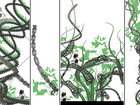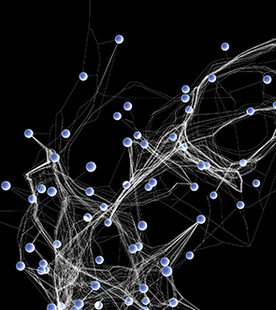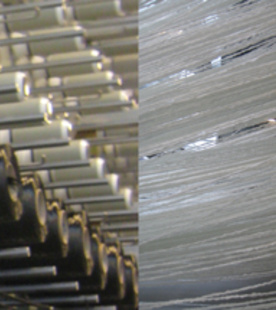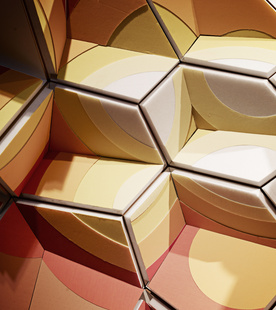Mary Katherine Heinrich: Interactive Self-Modelling of Architectural Species: A Simulation-Based Search for Learned Objectives and Behavioral Novelty in Unbounded Complex Systems
This PhD occurs under the Future and Emerging Technologies (FET) project 'flora robotica'. 'flora robotica'’s main objective is to develop and investigate closely linked symbiotic relationships between robots and natural plants and to explore the potentials of a plant-robot society able to produce architectural artifacts and living spaces.
The consortium partners will create a society of robot-plant bio-hybrids functioning as an embodied, self-organizing, and distributed cognitive system. The system grows and develops over long periods of time in interaction with humans resulting in the creation of meaningful architectural structures. The robotic assemblies (‘artificial plants’) support and control the biological plants through appropriate scaffolding, watering, and stimuli that exploit the plants different tropisms (phototropism, gravitropism, thigmotropism).
The natural plant, in turn, supports and controls the robotic plant by guiding it through growth (e.g., towards light) and supporting the weight of the robot in later growth phases. The artificial plants are built from small heterogeneous sensing and actuation modules connected using lightweight construction elements.
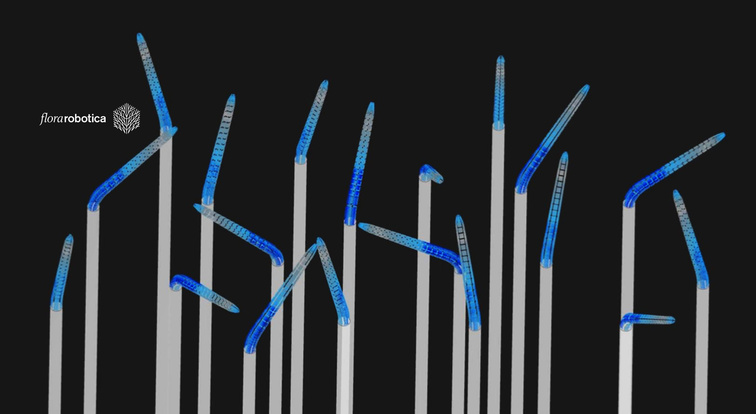
Each robotic plant connects wirelessly to the Internet. In contrast to top-down control, we explore a developmental plasticity of bio-hybrid systems, where robots and plants grow together from sprout to adult stage and form a closely co-dependent and self-organized system. The robot-plant organisms live in a human-inhabited environment and through interaction with humans grow into architectural structures (e.g., walls, roofs, benches) providing functionality such as shade, air quality control and stress relief. Humans, plants, and robots form an internet-connected social garden where desired structures and behavior patterns emerge based on both local interactions and global interactions with parts of the garden growing at other locations.
Hence, the social garden is a cultural system that shows long-term learning and adaptation where all past actions and interactions between the natural and artificial plants are represented in the embodiment of the garden.
The primary research areas for Phil Ayres and Mary Katherine Heinrich, at CITA, are architectural modes of representation and architectural modes of construction.
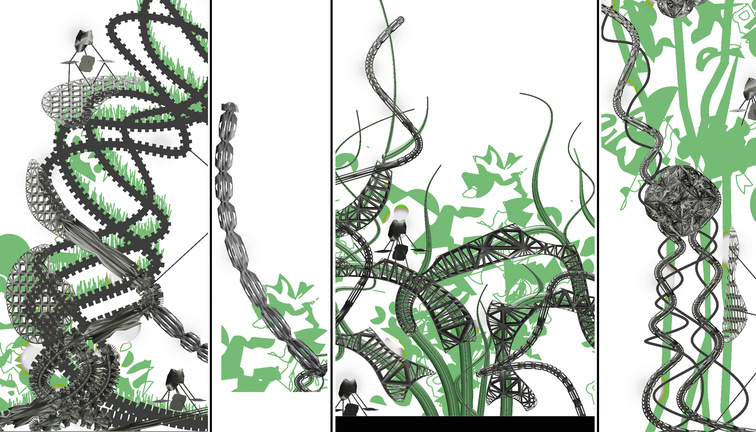
The focus of Mary Katherine's PhD research within the flora robotica project is in using simulation as a medium to explore and design human-algorithm collaboration for continuous definition of architecture-led growth objectives for physical systems (both biological and robotic).
The PhD endeavors to extend the state-of-the-art in distributed robotic control in responsive, interactive, or behavioral architecture. The research topic proposes that by using interactive interfaces to allow human collaborators to contribute judgment and priority, accurate continuous self-modelling of behaving architecture and its context can occur, despite unresolved problems of validation & verification in simulating climate, ecology, and human dynamics.
Using novel modelling methodologies being collaboratively developed for flora robotica's efforts in simulating plant-robot bio-hybrids, Mary Katherine's research approaches the built environment as being conceptually comprised of societies of architectural 'species.' Biological species are grouped as such because they demonstrate measurable similarity in aspects such as DNA, morphology, behavioral patterns, or impact on ecological niche.
Therefore, in this modelling paradigm, architectural elements will be classified according to control mechanisms, behavior, and relationship to context, rather than by performance typology or construction module. Though architecture is often conceived as static past the end-point of construction, we know that this is merely an abstraction commonly utilized by the discipline. Though of course not all elements in the built environment will be active (such as plants or robotic elements), this 'species' modelling paradigm recognizes that even purely mechanical elements are continuously behaving, and interact with their contexts in non-trivial ways.
The self-modelling of these architectural 'species,' dependent on actuation-sensation feedback from the physical system, aspires to allow growth and movement of the built environment to reach architectural objectives that are not predetermined or centrally defined, but rather are continuously learned and non-centrally controlled. In the flora robotica symbionts, this will occur through collaboratively developed embodied evolution (EE) in the system's evolutionary robotics. The desired resultant system would not only be able to resiliently learn its architectural objectives, but would be able to suggest positive new behaviors not originally predicted, nor included in the designer's or user's pre-defined scopes.
In order to achieve productive human-algorithm collaboration in this self-modelling and definition of objectives, the human collaborators (the architectural designers and/or the system users) must be able to effectively, reliably, and reproducibly engage with modelling representations of the architecture's contexts and possible outcomes.
The contexts, consisting primarily of complex dynamic systems, will be modelled according to a collaboratively developed multimodal paradigm in which the context systems are simultaneously modeled with unbounded time but bounded space, and with unbounded space but bounded time. The research also develops modes of representation for the possible outcomes of a designed architectural system, using embodied interaction HCI to augment models, allowing human collaborators to engage with a multi-dimensional array of simulations representing a scenario’s full scope of possible morphological and behavioral designs and their continuous changes over time.
This simulation-based approach aspires to help the human collaborators in exploring design nuance, discovering commonalities between quantitatively formalized objectives and those without metrics, and leveraging designer understanding of the designed system's emergent relationships between various real-world systems and sets of non-human stakeholders.
This project has received funding from the European Union's Horizon 2020 research and innovative programme under the FET grant agreement no. 640959.
Project consortium members
The project consortium members, in addition to those at CITA, are Heiko Hamann, Mostafa Wahby, and Mohammad Divband Soorati at the Swarm Intelligence Group of the University of Paderborn ; Przemyslaw Wojtaszek and Tomasz Skrzypczak at the Department of Molecular and Cellular Biology ; Serge Kernbach, Olga Kernbach, and Igor Kuksin at Cybertronica Research ; Kasper Stoy, Sebastian Risi, Laura Beloff, Andrés Faiña, and Frank Veenstra at the Robotics, Evolution and Art Lab of the IT University of Copenhagen ; and Thomas Scmickl, Payam Zahadat, Daniel Hofstadler, Bianca Pichler Thier, and Sibylle Hahshold at the Artificial Life Lab of the Karl-Franzens-University Graz .



